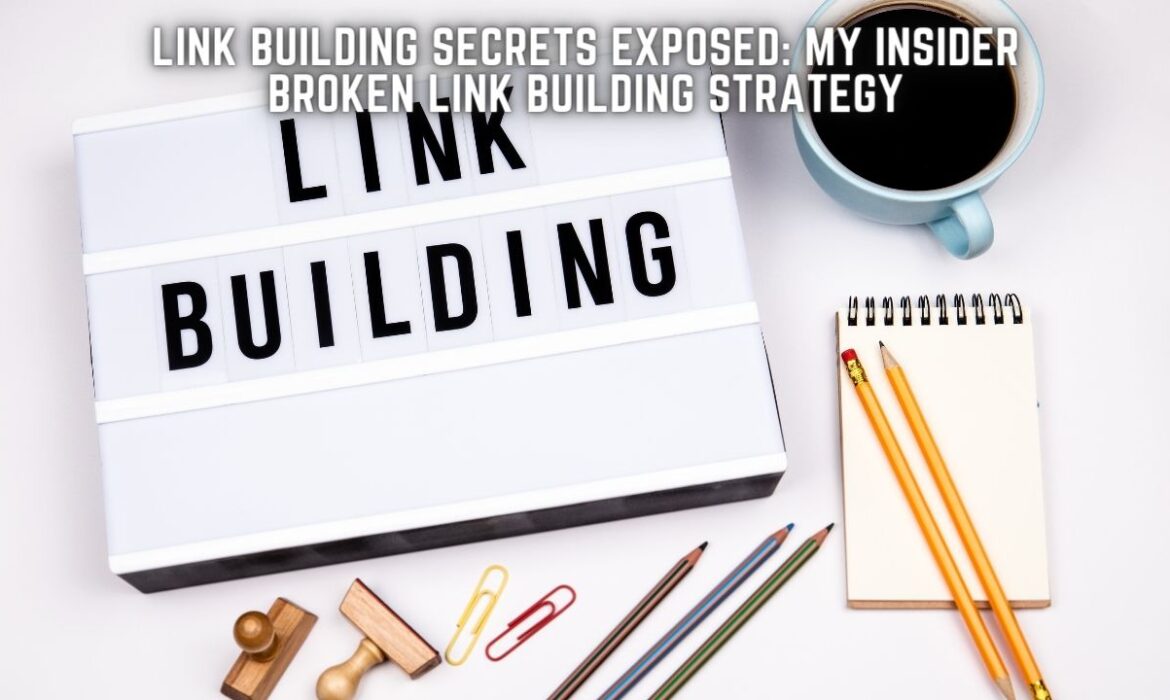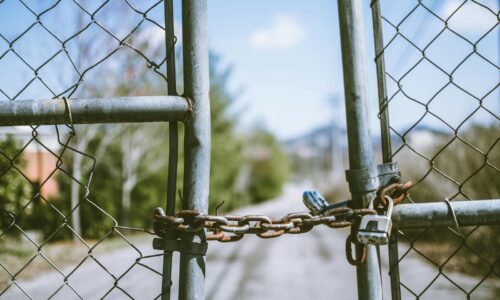
Understanding Broken Link Building
Before diving into the nuts and bolts of my insider broken link building strategy, it’s important to understand the basic concept of this technique and the benefits it can bring to your SEO efforts.
Concept of Broken Link Building
Broken link building is a strategic approach used in search engine optimization (SEO) to acquire backlinks by identifying broken links on other websites and replacing them with a link to your own website. The idea is to find broken links, reach out to the website owners, and suggest replacement links from your own website. Essentially, you’re helping the website owner fix a problem (the broken link), while also gaining a backlink for your website. This strategy is a part of broader link building strategies for SEO.
Benefits of Broken Link Building
There are several benefits to this SEO strategy. Broken link building can help boost your website’s search engine rankings and increase organic traffic (Backlinko). This is because backlinks are a key ranking factor in Google’s algorithm, and broken link building is an effective way to acquire them.
Furthermore, broken link building can improve your website’s authority and on-page SEO. When you replace a broken link on a relevant website with a link to your own high-quality content, you demonstrate to both the website owner and their audience that you’re a credible resource in your field (DashClicks).
Additionally, this strategy is cost-efficient. It involves leveraging existing web content and resources, rather than investing heavily in creating new content or paying for sponsored links. This makes it a smart choice for businesses and individuals who want to maximize their SEO efforts while working within a budget.
By understanding the concept and benefits of broken link building, you’re now ready to dive deeper into the specifics of this strategy. Up next, we’ll explore how to identify broken links and how to effectively reach out to website owners in the subsequent sections of this article.
Steps in Broken Link Building
In my experience, a successful broken link building strategy involves two key steps: identifying broken links and reaching out to website owners. Let’s break down each of these steps.
Identifying Broken Links
The first step in my broken link building strategy is to find relevant websites in my niche that have broken links (SEMrush). Identifying these broken links is crucial, as they provide opportunities for acquiring new backlinks.
Various tools and strategies are available for identifying these broken links, like Google Search, Ahrefs, and Screaming Frog. These tools help me pinpoint broken links on other websites and determine which ones can be easily replaced (DashClicks).
With these tools, I look for websites related to my niche that might have broken links. I especially focus on resources or content pages, as they often link out to external websites and hence have a higher likelihood of having broken links.
Reaching Out to Website Owners
Once I’ve identified the broken links, the next step is to reach out to the website owners or webmasters. This is a crucial part of the broken link building strategy, as it’s the point where I suggest replacing the broken links with a link to my own website (Backlinko).
I usually approach this with a polite email, highlighting the broken link on their site. In this email, I make sure to suggest a replacement link from my own website that would be just as (or more) valuable for their audience. Here, it’s essential to be respectful and helpful, rather than pushy.
Example of outreach email:
Subject: Found a broken link on your site
Hello [Name],
I was browsing your website and found a great resource page on [Topic]. However, I noticed that one of the links was broken ([Broken Link URL]).
I have a similar resource on my website that could replace the broken link: [Your Content URL].
I thought it might be helpful for your readers.
Best,
[Your Name]
This step might require a few iterations and follow-ups, but the results in terms of SEO improvement can be significant. Remember, the goal of this link building strategy is not just to gain a backlink but to provide value to the other website’s audience.
By following these steps, you can effectively execute a broken link building strategy, one of the many effective link building strategies I recommend.
Tools for Broken Link Building
Implementing a successful broken link building strategy requires using the right tools. Two types of tools I found extremely beneficial in my link building efforts are web-based SEO audit tools and Google Search Console. Let’s discuss each of these in detail.
Web-Based SEO Audit Tools
Web-based SEO audit tools like Ahrefs, SEMrush, and Sitechecker are incredibly helpful in identifying and fixing broken links on your site. These tools offer comprehensive site audit features, scanning your site for errors and pinpointing broken links.
For instance, Ahrefs’ site audit tool can scan your site and provide a list of all the 404 errors and broken links on your site, along with the internal pages they appear on. This allows you to update the broken links with the correct ones. Ahrefs Site Explorer can also be employed to find broken links. You can enter your site URL and access the “Backlinks” report or the “Best by links” report to identify broken backlinks on your site. You can also find broken outgoing links by going to the “Outgoing links” report (Kinsta).
Furthermore, Sitechecker’s Website Crawler tool comes in handy for finding broken links on your site. After entering your domain, the tool will scan your site and identify URLs with 4xx status that are linked to other pages on your site. This helps you identify and fix broken links for your entire site (Kinsta).
Google Search Console for Broken Links
Another tool to utilize in your broken link building strategy is Google Search Console. This tool, provided by Google, includes a Crawl Errors report that allows you to see all the pages on your site that returned a 404 error to Google. This feature can help you identify and fix broken links on your site.
By leveraging these tools, you can streamline your broken link building process, making it more efficient and effective. Always remember, the key to a successful link building strategy is not just about finding broken links, but also providing valuable content to replace them. Check out my tips on content-based link building strategy for more insights.
Creating Content for Broken Link Building
Content is the backbone of any successful broken link building strategy. The quality of content you offer to replace broken links can make or break your campaign.
Importance of High-Quality Content
As I’ve emphasized in my articles on link building strategies for SEO and effective link building strategies, providing valuable and high-quality content is crucial for successful link building. This is no less true when it comes to broken link building.
When you spot a broken link and reach out to the website owner, you’re offering them a solution to their problem. But this solution must be of equal or greater value than the original content. If the replacement content is subpar, it’s unlikely that the website owner will be interested (Backlinko).
High-quality content isn’t just about well-written articles. It extends to infographics, videos, podcasts, and other forms of multimedia content. The goal is to provide content that’s useful, engaging, and relevant to the audience of the website you’re reaching out to.
Surpassing Old Link Standards
The success of a broken link building campaign depends on the quality of the content you offer to replace the broken links. It’s not enough to simply match the quality of the original content that the broken link pointed to. To increase your chances of success, aim to create high-quality content that surpasses the old link and meets the recent standards of search engine algorithms.
In essence, you should aim to produce “link-worthy” content. This might involve conducting original research, providing new insights on a topic, or creating a comprehensive guide that covers a topic in-depth.
Surpassing the old link standards is particularly important considering the evolution of SEO. What worked a few years ago might not cut it today. Your content needs to align with the current SEO best practices and provide real value to users. This approach not only increases the chances of your link being accepted but also boosts the likelihood of it being shared, leading to even more backlinks.
Remember, successful content-based link building strategy requires time, effort, and a solid understanding of your target audience and what they find valuable. But with a little creativity and persistence, you can create high-quality content that not only earns you backlinks but also positions you as an authority in your field.
Tips for Successful Broken Link Building
In my experience, a successful broken link building strategy requires more than just identifying dead links and reaching out with replacement suggestions. It’s also crucial to approach your outreach correctly and persevere with follow-ups when needed.
Proper Addressing in Outreach
When reaching out to website owners or admins to replace broken links, one key aspect is to direct your message to the right person. According to DashClicks, targeting mid-level managers and regional team heads is more likely to get a response than aiming for higher-ups in the company. It’s also important to remember that you’re engaging with real people. Always be polite and professional in your communication.
And make no mistake, crafting the perfect outreach message is an art. You need to strike the right balance between being brief and providing sufficient details to make your proposition compelling. Make sure to clearly explain the benefits of replacing the broken link with your suggested link. You might also want to check out my tips for a successful link building outreach strategy.
The Power of Follow-Up
Even if you’ve identified a perfect broken link and crafted an impeccable outreach message, you may not get a response immediately. This is where the power of follow-up comes into play. As DashClicks suggests, following up is crucial in a broken link building campaign. If you don’t receive a response or the broken link isn’t replaced, sending follow-up emails can increase the chances of success.
However, it’s important to be prepared for the possibility that the other party may not accept or want to replace the broken link. It’s a part of the game, and that’s okay. Always remember to remain professional in your follow-ups and respect the other party’s decision.
Broken link building can be a potent tool in your SEO arsenal, but it requires a strategic approach and a dash of patience. But when done right, it can lead to significant increases in organic traffic and boost your website’s SEO. For more tips and strategies, check out my guides on effective link building strategies and advanced link building tactics.
Pitfalls in Broken Link Building
While the broken link building strategy has its merits, there are also certain pitfalls that you should be aware of when implementing this tactic.
Time-Consuming Nature of the Process
The first pitfall to note is that broken link building can be time-consuming. The process involves identifying broken links, reaching out to the website owners, and creating content that surpasses the old link standards. Each of these steps can take time, and there’s no guarantee that your efforts will always result in a new backlink.
As SEMrush points out, “Broken link building can be time-consuming, but it can yield powerful results if done correctly.” This means that while it might take time, the pay-off can be substantial if you manage to secure a backlink from a high-authority site.
Remember, the key is to be consistent and patient. Quality link building is not an overnight process, but the long-term benefits, such as improved website authority and on-page SEO, make it a worthwhile endeavor.
Handling Rejection and Non-Responses
Another pitfall in broken link building is dealing with rejection or non-responses from website owners. Not every outreach you make will be successful. Some website owners might ignore your message, while others might decline your offer to replace the broken link.
It’s important not to take these rejections personally. Instead, use them as an opportunity to refine your link building outreach strategy. Make sure your message is clear, polite, and offers value to the recipient.
For those who don’t respond, consider sending a follow-up message. Sometimes, emails can get lost in a busy inbox, and a gentle reminder might be all that’s needed to get a response.
In conclusion, while there are challenges involved in broken link building, understanding these pitfalls can help you navigate them more effectively. By being aware of the time investment required and learning to handle rejections gracefully, you can maximize the potential of your broken link building efforts and see significant improvement in your SEO performance.





